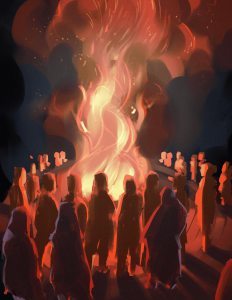How not to get SAD; how to treat it if you do
December 18, 2022
Winter is starting, and as the days get gloomier so do the emotions of thousands of Oregon State University students. This phenomenon is known as Seasonal Affective Disorder, or SAD for short, and is characterized by episodes of depression that occur around the same time every year with the change of seasons.
So how do you know if you have SAD?
According to MedlinePlus, an online health information resource under the National Library of Medicine, “the symptoms that occur during depressive episodes in people with SAD are similar to those of major depressive disorder, including a loss of interest or enjoyment in activities, a decrease in energy, a depressed mood and low self-esteem. In most people with seasonal affective disorder, depression and other features appear in the fall and winter months and subside in the spring and summer months.”
They also mention individuals suffering from SAD may gain weight due increased cravings for carbohydrates and an increase in sleeping.
So how do you treat SAD?
Light Therapy is a form of therapy that aims to expose a person to sunlight for about 30 to 45 minutes per day as it is hypothesized that SAD has a correlation with lack of exposure to light and deficiency of Vitamin D.
“However, people with certain eye diseases or people taking certain medications that increase sensitivity to sunlight may need to use alternative treatments,” according to reports from the National Institute of Mental Health.
Psychotherapy, also known as Talk Therapy, has also shown significant results for treating SAD as well.
“Cognitive behavioral therapy (CBT) is a type of talk therapy aimed at helping people learn how to cope with difficult situations; CBT also has been adapted for people with SAD,” the NIMH informs on their website.
Medications such as antidepressants, called selective serotonin reuptake inhibitors (SSRIs), are another potential alternative to treat SAD. However, a doctor must be consulted before using any sort of medication.
Physical activity such as exercise can help combat SAD.
The Mayo Clinic recommends “doing 30 minutes or more of exercise a day for three to five days a week” as it can “significantly improve depression or anxiety symptoms.”
So how do students deal with SAD?
Many students have reported that being involved with hobbies such as crafting, sports or even music helps them when dealing with depression related to the change in season.
“I like walking around when it is not raining or snowing, getting in nature makes me feel more alive and relaxed,” said Ethan Valladares, a freshman business student here at OSU.
Seasonal depression is a beast lurking inside many, however, by recognizing its symptoms and taking the correct preventive measures, it is possible to overcome it. If you think you have Seasonal Affective Disorder don’t forget you are not alone, reach out for help to your friends or family or to Counseling & Psychological Services here at OSU.






